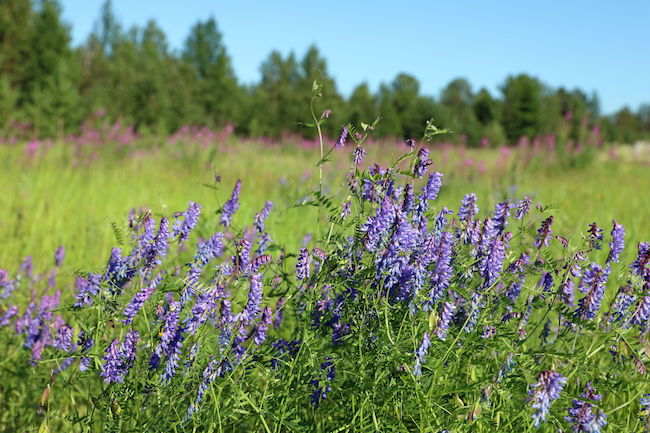
Winter may be the gardening off-season, but it’s also a great time to improve your soil health. Planting a fall cover crop is one of the most effective steps you can take to improve your garden for next year. Fall cover crops provide numerous benefits. They help reduce soil erosion, improve soil fertility, increase organic matter, suppress cool-season weeds, and create a healthy seedbed for spring planting. The FruitGuys Community Fund also considers cover crops to be an essential part of good water management, as they protect water quality by reducing runoff and the need for fertilizer. In this way, cover crops help prevent excess nutrients from entering watersheds, while preventing dangerous algal blooms, which can damage drinking water supplies, create dead zones in the water, and sicken or kill people and animals.
There are two main types of cover crops to consider when selecting for fall planting: winter-kill or winter-hardy. Winter-kill cover crops are killed by the cold, but grow quickly enough during the fall that their biomass protects the soil. Winter-hardy cover crops survive the winter. In colder zones, they go dormant when temperatures drop and resume growing in spring. In warmer areas, they grow continuously through the winter. These two overarching categories include a variety of plant options, including legumes, brassicas, and grasses.
Winter-Kill Crops
Even though these crops are killed by late fall frosts, their roots will still help hold soil in place. They also provide an excellent mulch for spring crops and transplants, without even needing to till.
- Rapeseed
- Oats
- Buckwheat
- Field Pea
- Oilseed Radish
Winter-Hardy Crops
These crops will still be growing when it’s time to plant spring crops, so you’ll need to mow them to the ground to kill them. After about one week, you should till them in. It’s also recommended that you wait to plant until two weeks after tilling to avoid nitrogen tie-up, which occurs when the process of decomposition makes nitrogen temporarily inaccessible to plants.
- Austrian Winter Peas
- Crimson Clover
- Winter Wheat
- Hairy Vetch
- Winter Rye
When to Plant
Most cover crops should be planted approximately one month before your local area’s estimated first frost date. However, this does vary some, depending on the crops, so be sure to check the packaging or do some online research.
There are many garden apps and websites you can use to find your first frost date based on your zip code. You can also check out this handy chart, organized by USDA Hardiness Zones.
How to Plant
To prepare your bed for cover crops, loosen the first 3-4 inches of soil by tilling or forking, before raking the surface smooth. Spread your cover crop seed by hand or use a broadcast seeder, like those used to spread grass seed. Then, rake the seeds into the soil, bearing in mind that larger seeds need to be raked in deeper than smaller seeds. And unless you’re getting rain, you’ll need to water until your crops have germinated.
If your garden isn’t fenced, it’s important to note that deer and other herbivorous animals may eat your cover crops. Winter rye is a favorite for deer, for example, so you may want to choose an alternative crop, if they’re common in your area.
As farmers and gardeners, we have the opportunity to protect our community’s valuable natural resources, so consider not leaving your soil bare this winter. Use fall cover crops to protect soil and water for the benefit of all.




